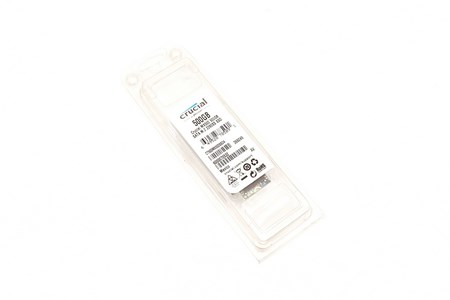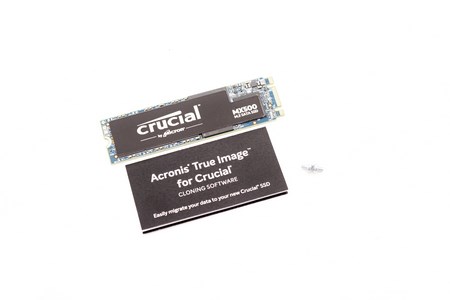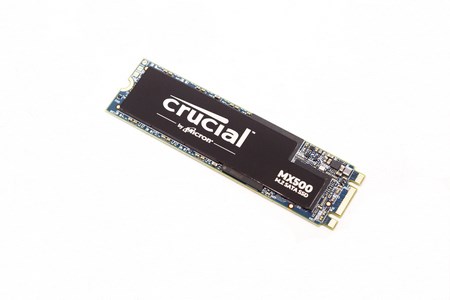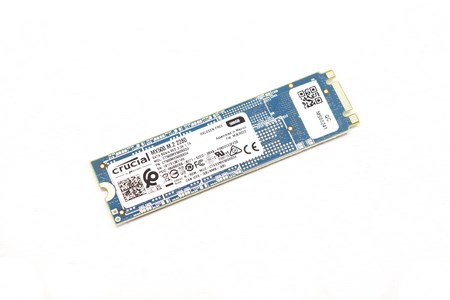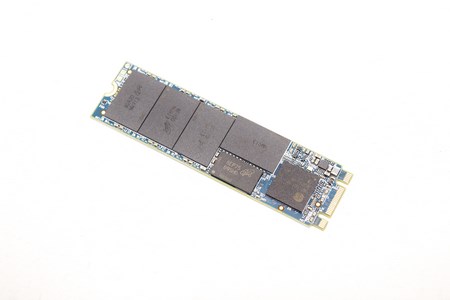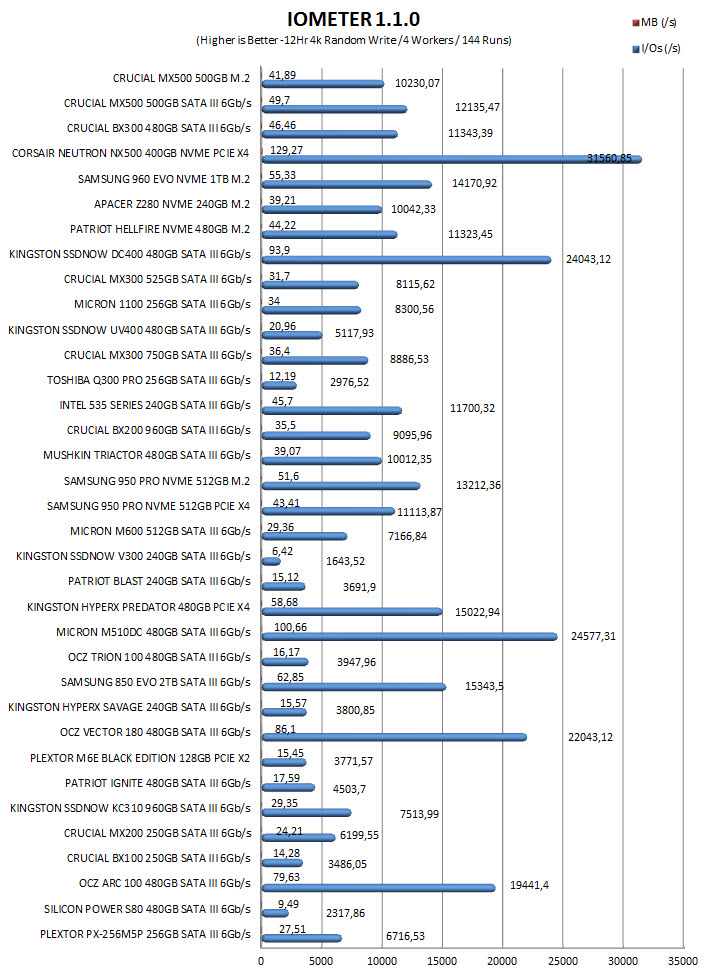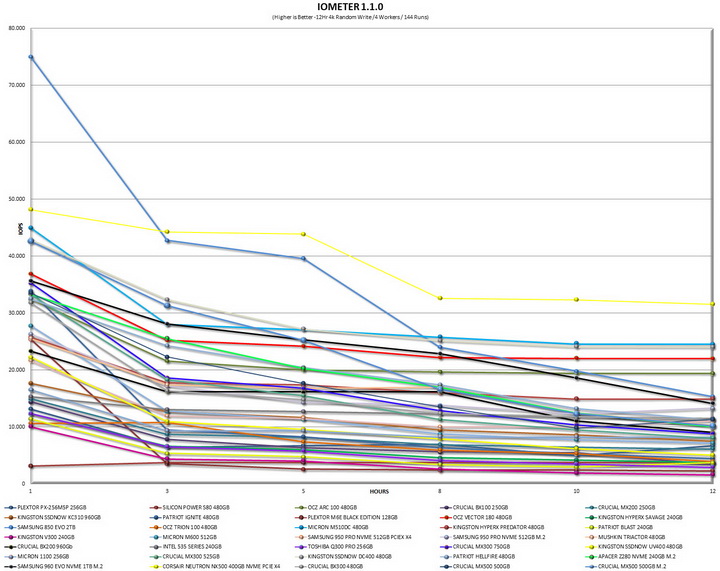INTRODUCTION
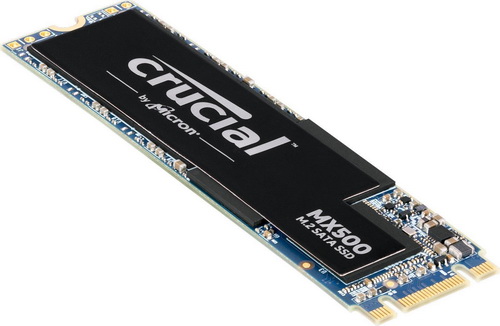
Although SATA III SSDs (solid state drives) still hold the first place in global sales (not only thanks to their compatibility with much older systems but also because of their slightly better price/capacity ratio) the far smaller (and in some cases much faster) M.2 models rise in popularity every day. Of course unlike SATA SSDs M.2 models are currently available in "regular" (offer similar performance levels as their SATA brothers) and NVMe (enthusiast grade) types. We've tested some NVMe models in the past but never a "regular" M.2 model so since the latest MX500 SATA III SSD by Crucial which we reviewed a while back is also available in the M.2 form factor we decided to test it and see just how close (of far) it lands compared to its brother.
Crucial.com is a leading online retailer specializing in computer memory (RAM) and solid state drives (SSD), and is operated by a subsidiary of Micron Technology, Inc., one of the world's leading manufacturers of computer memory products. Crucial.com offers more than 250,000 compatible products for nearly every computer system: home and business, old and new, PC and Mac® computers. Utilizing a suite of easy-to-use, free online tools, including the Crucial® System Scanner and the Crucial Memory Advisor™ tool, crucial.com makes it easy to find a compatible upgrade to improve computer performance and restore system reliability.
Just like last time the MX500 line of SSDs is based on Micron's 256Gbit 64-layer 3D TLC NAND flash and is currently available in 250GB/500GB/1TB/2TB capacities for the SATA III interface and 250GB/500GB/1TB for the M.2 2280 interface. This time over Crucial decided to equip the MX500 line with the same SM2258 quad-channel NAND controller by Silicon Motion which features various technologies including NANDXtend (error-correcting with data protection), Static Data Refresh (ensures data integrity), Direct-to-TLC and SLC Caching (algorithms for optimal sustained performance - Crucial uses a dynamic buffer), global wear leveling (algorithm which evens program/erase count and extends SSD lifespan), DevSleep (device sleep - power save), S.M.A.R.T, TRIM, NCQ, TCG Opal and hardware AES 256bit encryption. The MX500 line of SSDs also supports partial power loss protection (Crucial calls it power loss immunity and unlike previous MX models it's based on a combination of firmware improvements and capacitors), is covered with a 5 year limited warranty and features an MTBF (MTTF) of up to 1.8 million hours. Finally Crucial reports a write endurance of 100TBW for the 250GB model, 180TBW for the 500GB model, 360TBW for the 1TB model and 700TBW for the 2TB model.
SPECIFICATIONS AND FEATURES

PACKAGING AND CONTENTS
As expected the M.2 version of the MX500 arrived inside a clear plastic package.
Two mounting screws and a paper with a serial number for the Acronis True Image cloning software are the two things that accompany the MX500 M.2 version.
THE CRUCIAL MX500 500GB M.2
The M.2 version of the MX500 follows the 2280 form factor (22mm wide and 80mm long).
The rear of the PCB is empty on the 500GB model (and the 250GB) but should be populated with NAND flash on the 1TB one.
The long sticker at the front features a thin layer of copper inside so it also acts as a tiny heatsink.
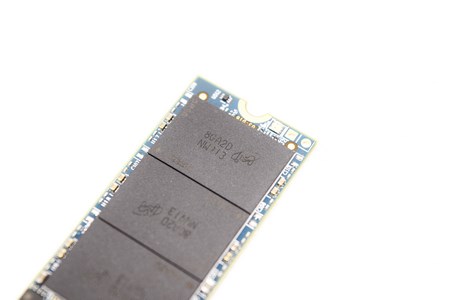
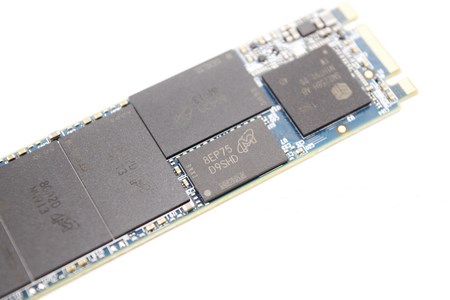
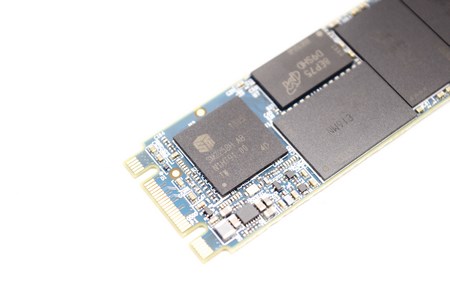 Right beneath the sticker we find 4 TLC NAND flash modules (128GB in capacity each), 256MB DDR3L SDRAM module and the Silicon Motion SM2258 quad-channel controller.
Right beneath the sticker we find 4 TLC NAND flash modules (128GB in capacity each), 256MB DDR3L SDRAM module and the Silicon Motion SM2258 quad-channel controller.
TEST BED
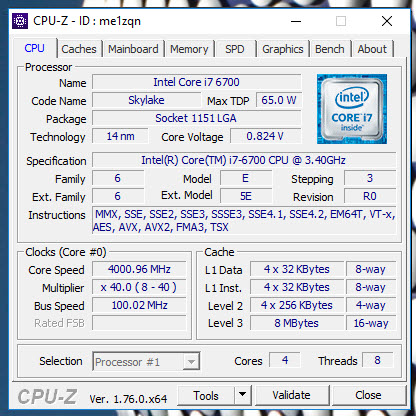

TESTING METHODOLOGY
After almost 10 years of testing solid state drives we've concluded that it's almost impossible for any single benchmark suite to accurately measure their performance and that's why in certain benchmark suites we see amazing read/write performance numbers with some drives while in others things are quite different. The reason behind this is that some benchmarking suites are configured to read and write random chunks of data while others read and write constant (sequential) ones. So that's why i always use a very wide selection of benchmarking suites including AIDA64, HD Tach RW, HD Tune Pro, Crystal Disk Mark, Sisoftware Sandra Pro, AS SSD, IOmeter and ATTO. To get the most accurate results each test gets repeated a total of 6 times with the average performance numbers recorded into our charts. Also as of February 25th 2015 our results will also include the Storage Networking Industry Association’s (SNIA) IOMeter tests. These tests include a 12 Hour write test used to “simulate” performance degradation over time and a mixed workload test which basically shows what you can expect when using an SSD continuously for roughly two hours. Unfortunately due to the time required for these tests we repeat them a total of 3 times and not 6 as the above.
Many people have made inquiries about our charts in the past so once again please do keep in mind that the Charts have the average performance numbers of each drive recorded and not the peak (highest) ones. Also although every single one of these programs can help potential buyers choose the right drive for their needs you should also remember that from any kind of benchmark up to real world usage the gap is not small (and usually most differences will go unnoticed by most people). All tests were performed in a fresh Windows 10 Pro x64 installation with every update installed up to June 5th 2018.
TEST RESULTS - AIDA64 / ATTO


TEST RESULTS - HD TACH RW / HD TUNE PRO


TEST RESULTS - SISOFTWARE SANDRA PRO / CRYSTAL DISK MARK X64


TEST RESULTS – AS SSD / IOMETER

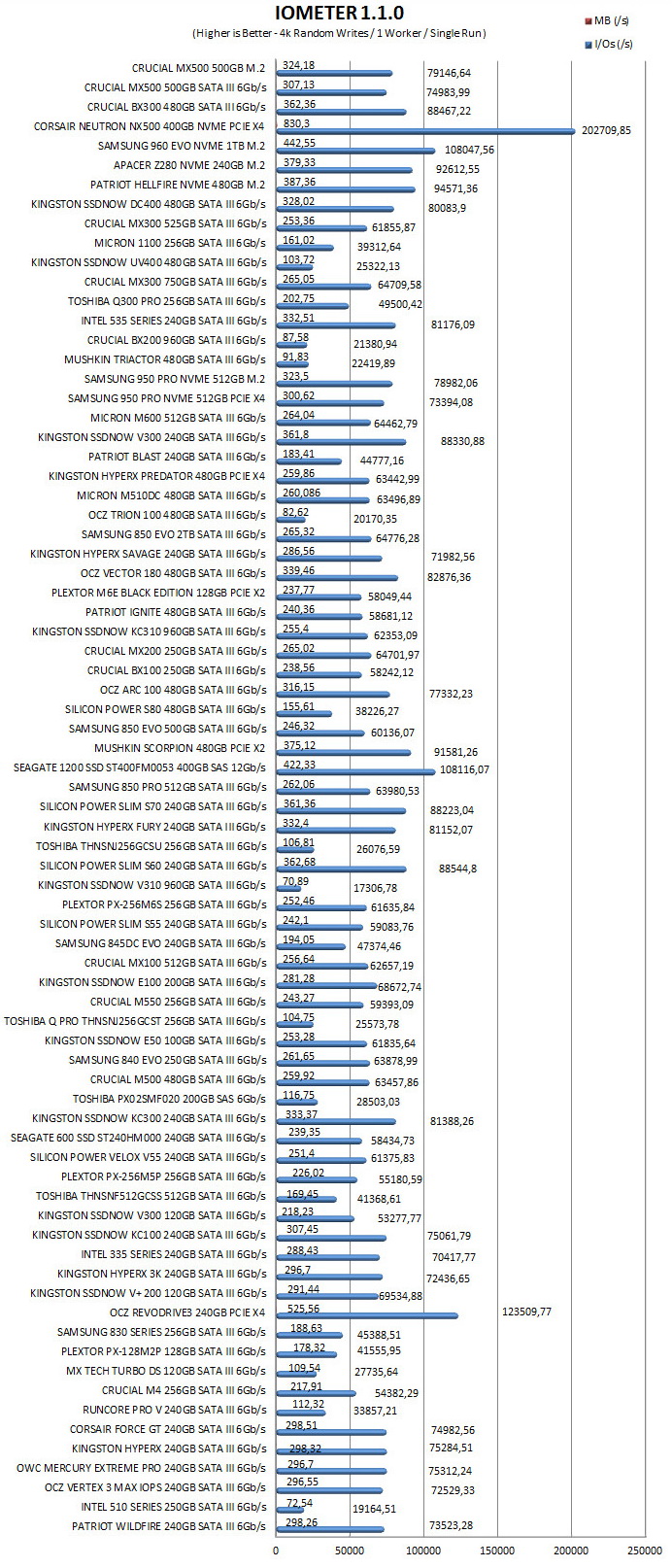
TEST RESULTS – IOMETER SNIA
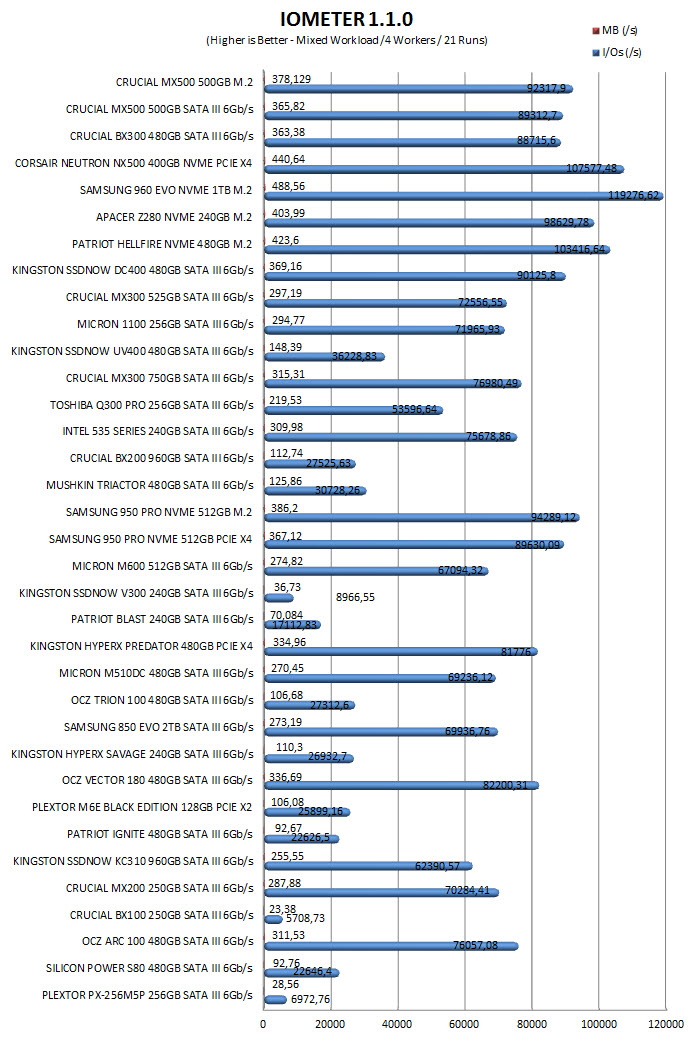
CONCLUSION

As you can all easily tell from our charts the MX500 500GB M.2 variant performs more or less the same as its SATA brother (they actually exchange punches a lot with the M.2 variant coming up ontop in most tests). Still much like most M.2 drives out there (at least the ones without heat spreaders on them) the performance of the MX500 gets throttled down when it reaches high temperatures. Even in our Z170 test rig which has a total of 11 system fans installed this is quite evident in the IOMeter SNIA 12 hour endurance test. Of course we don’t expect that to be much of an issue for like 90% of the user base out there (if not more) and it can always be resolved by using an M.2 heatsink (like the one offered by our friends over at EKWB) but still it’s something we did encounter during our tests.
Just like its SATA brother the M.2 version of the MX500 also hits the sweet spot between price and performance and so the 500GB model which we have here retails for just USD109.99 inside the USA (Amazon.com) and for 113Euros inside the EU (Amazon.co.uk). Now as expected in a market that already counts many M.2 NVMe drives the M.2 variant of the MX500 may seem a bit “weak” but it should be more than just enough for the majority of users out there and since it delivers on everything Crucial promises it gets our Golden Award.

PROS
- Build Quality / Durability (180TB TBW / 1.8 Million Hours MTBF)
- Very Good Performance
- Features (NANDXtend / Static Data Refresh / SLC Caching / DevSleep/ eDrive Support)
- Crucial Storage Executive Software
- 5 Year Warranty
- Price
CONS
- Small Performance Increase Compared To The BX300 Line
- High Temperatures (Performance Throttling)
- Performance (Compared To NVMe Drives)

 O-Sense
O-Sense





